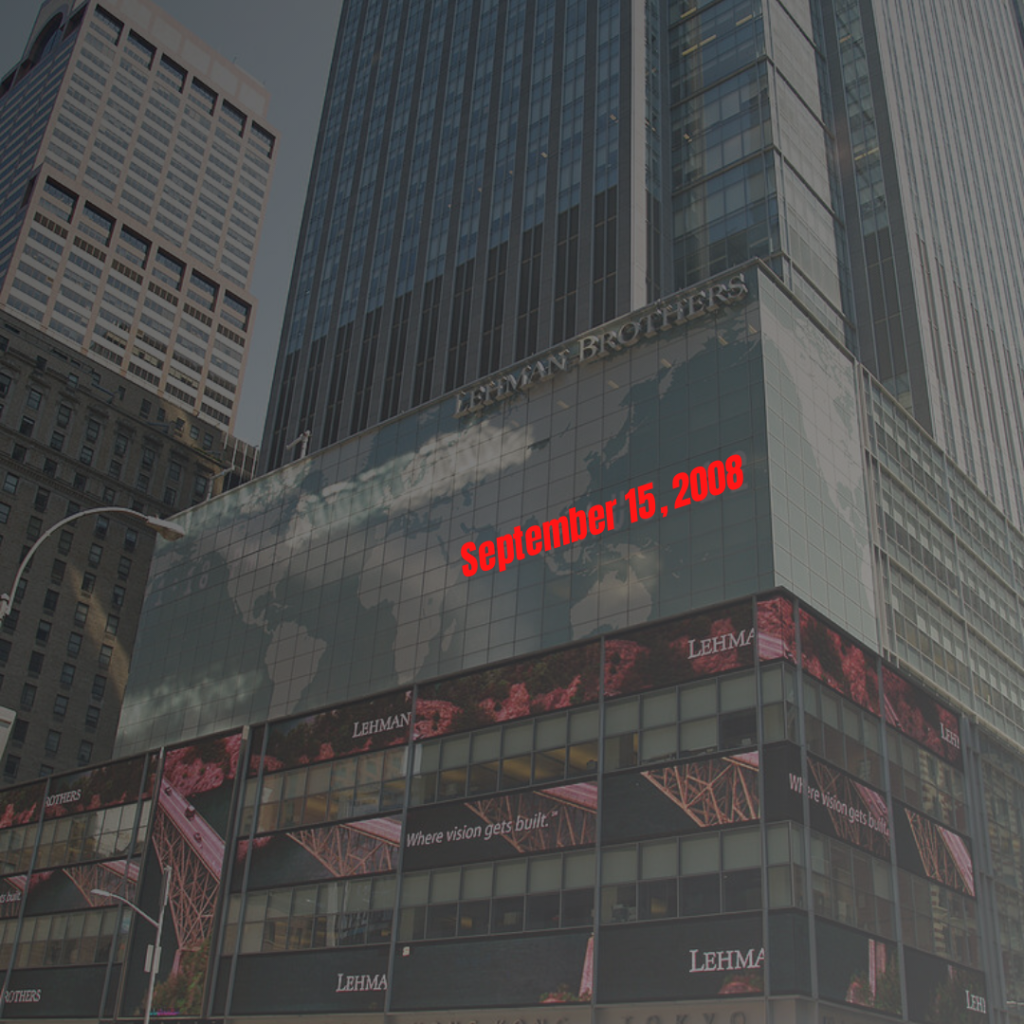
It has been only a little over a decade yet it feels like a century ago perhaps because it also feels like the latest iteration of the Gilded Age. On September 15, 2008, Lehman Brothers filed for bankruptcy. In (this summary of) his paper, Laurence Ball (2016) asks, “Why did the Federal Reserve [Fed] let Lehman Brothers fail?” He follows with, “Fed officials say they lacked the legal authority to rescue the firm, because it did not have adequate collateral to borrow the cash it needed.” He (p2) writes, “According to Bernanke (FCIC testimony, 2010): ‘[T]he only way we could have saved Lehman would have been by breaking the law, and I’m not sure I’m willing to accept those consequences for the Federal Reserve and for our systems of laws. I just don’t think that would be appropriate.’”
Ball (p2) disputes the Fed’s official line and Bernanke’s explanation. Instead, Ball concludes “that the explanation offered by Fed officials is incorrect, in two senses: a perceived lack of legal authority was not the reason for the Fed’s inaction; and the Fed did in fact have the authority to rescue Lehman.” He argues that, based on a de novo examination of its finances, Lehman did have enough collateral and that the Fed prevented it from using the Primary Dealer Credit Facility (PDCF).
The sensitivity around this question is that Lehman’s failure was a cataclysmic event for financial markets and for the global economy. If the Fed had allowed it to fail on dubious grounds, it would reflect a gross error in judgment and even incompetence. Ball (p3) states, “The record also shows that the decision to let Lehman fail was made primarily by Treasury Secretary Henry Paulson,” even though this is the Fed’s purview not the Treasury’s, and the decision was made presumably considering political sensitivities. (You might also recall that Paulson was the former chairman and CEO of Goldman Sachs, a competing investment bank, and if there were any ulterior motives, that would have been corruption.)
Therefore, the primary questions are: Why did the Fed not rescue Lehman? Did it have the legal authority to do so? Did Lehman have adequate collateral available? Were there political or other reasons for the decision?
The Complexities
In fairness to the Fed, it can get sued, and it has. Most notably, it got sued by former AIG CEO Maurice “Hank” Greenberg, who after a fair amount of drama lost his case with the court ruling that he did not have legal standing to pursue it. Instead, AIG did, and it had declined to do so. (In case you are interested in listening to Greenberg’s side of the story.) The prior ruling, in June 2015, had ruled in Greenberg’s favor but awarded no damages, and as Moyer (2017) reports the court stated that “the Federal Reserve had overstepped its authority in taking the stake in A.I.G.”
Thus, if the Fed indeed had legal concerns, the ensuing events would suggest that they were reasonable and legitimate. Also, in the United States, rehypothecation of collateral (repledging) is limited by Rule 15c3-3 of the SEC, but the United Kingdom had no such restriction. Lehman’s bailout would have included its foreign subsidiaries including its UK-based broker dealer. Thus, in terms of the counterfactual, had collateral been posted, it is uncertain who or which institution would have had final claim to it: other holders of the collateral or the Fed.
This potential concern for the Fed seems supported by Ball’s (p5) description of its actions, “The entity that Barclays almost purchased on the 14th, and which famously filed for bankruptcy on the 15th, was Lehman Brothers Holdings Inc. (LBHI), a corporation with many subsidiary companies. Most of these subsidiaries also entered bankruptcy immediately, but one did not: Lehman Brothers Inc. (LBI), which was Lehman’s broker-dealer in New York. The Fed kept LBI in business from September 15 to September 18 by lending it tens of billions of dollars through the Primary Dealer Credit Facility; after that, Barclays purchased part of LBI and the rest was wound down.” Also, LBI was heavily involved in the repo market, with its book still relatively intact perhaps due to access to the PDCF, and LBI’s disorderly unwinding might have been detrimental to the important money market.
Prior to Lehman’s failure, the Fed managed the sale of Bear Stearns, another failed investment bank, to JPMorgan Chase. The Fed subsequently set up the PDCF. (Another question that remains perhaps even more of a mystery is why Lehman did not avail itself of the PDCF earlier when its insolvency would not have been in question.) The Fed’s intervention in AIG involved a considerable equity stake, as the corporation was effectively nationalized. Thus, these two outcomes, managed sale and nationalization were not bailouts in the sense of what was to come.
Lehman – The Lesson Learned
Lehman’s bankruptcy triggered a credit crunch, and the Fed’s reaction was an alphabet soup of “special facilities,” including ones for the money market mutual fund industry, which experienced a run, and commercial paper, which froze. The Fed effectively backstopped trillion-dollar industries and provided trillions of dollars in additional support to various institutions. The knee-jerk reaction suggests that the Fed and others underestimated the impact of Lehman’s failure, and in its aftermath, decided to dramatically reverse course to a “whatever-it-takes” approach.
Lehman – The Lesson to Unlearn
The last lesson needs to be unlearned. As it turns out, what we have really learned is that moral hazard is a serious concern that has not been adequately considered or appreciated. The correct approach is to either allow firms to file bankruptcy or truly nationalize them. The focus of bailouts should be people not corporations. The American people’s tax dollars are not a piggy bank for irresponsible corporations. They are its collective contribution to build a better society for themselves.
Dramatically reversing course from what was once a more free-market ideology to a bastardized version of Keynesian economics takes the American economy and people from one extreme to another. This legacy of Lehman’s downfall is rearing its ugly head as the Fed bails out entire industries and corporations with no restraint and no accountability during this present crisis. It was irresponsible and immoral then, and it still is now. The American people deserve better.

